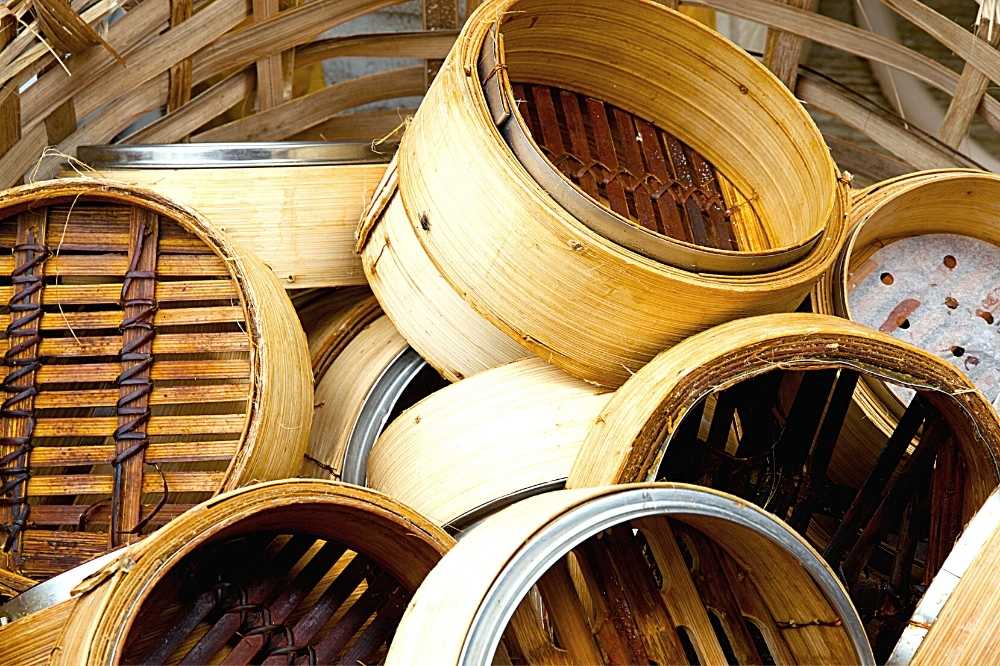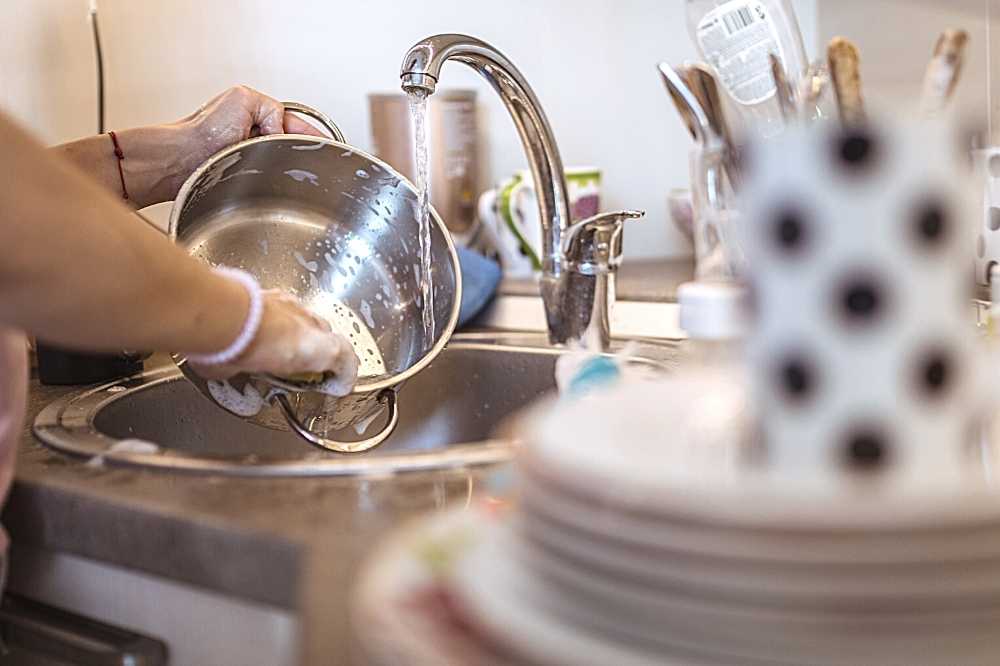Food steamers are conveniences that enable you to steam vegetables and other foods without submerging them in water.
They use only water, but they should be cleaned after use to remove any food and water residue.
Food steamers must often be cleaned by hand, although many have dishwasher-safe components.
To keep your food steamer in good condition, cleaning and drying it properly is essential.
Today we will discuss cleaning a food steamer and other vital tips.
Why Do Food Steamers Need to be Cleaned?
You might think that food steamers don’t need to be cleaned because they just use hot water to steam vegetables.
However, if you don’t clean your food steamer regularly, you might run into issues in the future.
First, if your food steamer is put away with food particles, they can dry and get stuck. This will make the steamer harder to clean in the future.

Also, nobody wants to take a steamer out of the cupboard and see old food residue.
Furthermore, if food particles are left in the steamer, they may clog crucial components, preventing it from correctly working in the future.
If old food is left in the steamer, you may notice a smell that worsens over time: old food is decaying and rotting.
Not only does this smell and look unsightly, but the bacteria that build up over time can also be dangerous.
If you don’t clean your food steamer regularly, it will be unusable within a very short time.
How Often to Clean Food Steamers?
Food steamers should be cleaned after every use. Whenever food and water are inside the steamer, it should be cleaned.
A food steamer needs to be cleaned before you put it back into storage. Also, if there is food or water inside, it should be cleaned and dried every time.
If limescale and hard water buildups occur in your food steamer, they should be dealt with as necessary.
Depending on how hard your home water is and how often you use the food steamer, you may need to descale the food steamer once every couple of weeks.
How to Clean a Food Steamer – Step by Step
Now, we will discuss how to clean a food steamer step-by-step.
1. Prepare the Food Steamer for Cleaning
Once your vegetables are steamed, remove all remaining pieces of vegetables, fruit debris, and other solid particles from the steamer.
You can take any remaining food and put it in the compost or save it for later.
If your steamer is an electric model, unplug it from the outlet and let it cool.
Once the steamer has cooled, remove the drip tray, the reservoir, and any remaining water.
If water is left in the reservoir, you can turn the steamer upside down over the sink to empty it.
2. Soak the Steamer Components
Fill your sink with warm and soapy water, and then allow the steamer to soak for 15 or 20 minutes.
If any food or debris is stuck on the steamer, soaking it in soapy water will loosen it so you can easily remove it.
This step may not be necessary if there are no stuck-on food particles.
However, remember that the whole unit cannot be soaked in water if you have an electric steamer.
If this is the case, the cord, the plug, and the base of your electric steamer should not be soaked in water.
Instead, take the inner basket, the steaming container, and the reservoir, and soak them in hot and soapy water.
3. Wash the Food Steamer

You can now take a dishcloth or even a fine dish sponge and clean the components. Be sure to get into the small cracks and corners to remove all remaining debris.
If your steamer has dishwasher-safe pieces, such as stainless steel hardware, these should be dishwasher-safe, and you can place them in the dishwasher to clean.
Leave enough space on all sides so that the entirety of the components gets sprayed with water.
Pay attention to the inside of the lid, the steamer basket, and the water reservoir.
When it comes to the water reservoir, don’t use a harsh chemical cleaner, anything toxic, or an abrasive sponge.
If you are unsure whether or not the components are dishwasher friendly, simply wash them by hand with a cloth or dish sponge.
Wait until the cycle is complete, and then take the components out of the dishwasher.
If you wash the components by hand, ensure that you rinse them thoroughly, so there is no soap on them.
You do not want soap getting into your food when you go to the food steamer next.
4. Dry the Steamer
Once the components have been washed, dry them thoroughly.
You do not want any moisture on the components, as it may cause damage when you store the steamer, especially for an extended time.
Therefore, use a dishcloth or a microfiber towel to remove any moisture.
This is especially important around any of the electrical components, as you do not want water leaking into any of the electrical components.
This may damage the food steamer to the point where it will no longer work.
Therefore, ensure the food steamer is thoroughly dry before you put it away for storage.
How to Remove Hard Water and Limescale from Food Steamers
If you have hard water in your home, excessive mineral deposits can build up inside the food steamer.
These mineral deposits can clog holes and damage the unit’s interior. Therefore, this hard water scale must regularly be removed.
To remove hard water deposits, run the steamer with vinegar and water mixture in the water reservoir instead of water.
This should loosen the hard water buildup enough to wipe it away with a cloth or towel. Once wiped away, clean the steamer as usual, as described above.
Conclusion
If you regularly clean your food steamer, it should be usable for many years. I hope that this guide is helpful to you.
Related: How To Get Rid Of The Air Fryer Smell.
